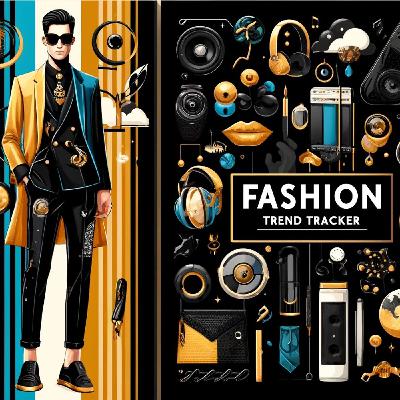Fashion's Evolving Landscape: Luxury Shifts, Collaborations, and Sustainability Strategies
Update: 2025-11-10
Description
The global fashion industry is seeing a surge of new partnerships, bold product launches, and major brand strategies in the past 48 hours. Luxury conglomerate Kering sold its beauty division to L'Oréal for 4.7 billion euros, giving L'Oréal renewed dominance in the prestige fragrance market and bolstering its future in wellness and longevity sectors. Kering is using the funds to refocus on its core fashion brands after reporting a 16 percent revenue decline for the first half of this fiscal year, signaling that even top luxury houses are feeling pressure from a global luxury sales downturn.
New collaborations and creative campaigns are fueling brand visibility as the lucrative holiday season starts. Prada, Coach, and Mulberry launched high-profile festive campaigns, spotlighting new bags and accessories in nostalgic and celebratory narratives. Gentle Monster, Fendi, and The North Face are pushing boundaries with unexpected product designs and interactive experiences, such as Gentle Monster’s cinematic eyewear launch and The North Face’s fashion-forward performance wear with Cecilie Bahnsen.
On the regulatory front, the United States has implemented a sharp hike in H-1B visa fees, increasing costs for fashion brands hiring international talent. Multiple US-based firms are now rethinking offers to foreign designers, which could affect the diversity and competitiveness of teams in the country’s fashion hubs.
Supply chain sustainability is also in focus. Bangladesh launched the Circular Fashion Partnership to trace and recycle its substantial 400,000 tonnes of annual textile waste, aiming for better resource use and stronger export opportunities through greener business models.
Consumers, facing price hikes and uncertain economic signals, are prioritizing value. The cost-per-wear metric is gaining traction, shifting buying decisions toward less frequent, more considered purchases and challenging the fast fashion model.
Compared to last year, fashion is seeing tighter margins and slower overall sales in many luxury segments, with brands leaning more on collaborations, digital engagement, and sustainability to maintain relevance. Leaders are responding by accelerating investment in circularity, digital retail innovations, and creative partnerships, hoping to weather economic headwinds and shifting consumer values.
For great deals today, check out https://amzn.to/44ci4hQ
This content was created in partnership and with the help of Artificial Intelligence AI
New collaborations and creative campaigns are fueling brand visibility as the lucrative holiday season starts. Prada, Coach, and Mulberry launched high-profile festive campaigns, spotlighting new bags and accessories in nostalgic and celebratory narratives. Gentle Monster, Fendi, and The North Face are pushing boundaries with unexpected product designs and interactive experiences, such as Gentle Monster’s cinematic eyewear launch and The North Face’s fashion-forward performance wear with Cecilie Bahnsen.
On the regulatory front, the United States has implemented a sharp hike in H-1B visa fees, increasing costs for fashion brands hiring international talent. Multiple US-based firms are now rethinking offers to foreign designers, which could affect the diversity and competitiveness of teams in the country’s fashion hubs.
Supply chain sustainability is also in focus. Bangladesh launched the Circular Fashion Partnership to trace and recycle its substantial 400,000 tonnes of annual textile waste, aiming for better resource use and stronger export opportunities through greener business models.
Consumers, facing price hikes and uncertain economic signals, are prioritizing value. The cost-per-wear metric is gaining traction, shifting buying decisions toward less frequent, more considered purchases and challenging the fast fashion model.
Compared to last year, fashion is seeing tighter margins and slower overall sales in many luxury segments, with brands leaning more on collaborations, digital engagement, and sustainability to maintain relevance. Leaders are responding by accelerating investment in circularity, digital retail innovations, and creative partnerships, hoping to weather economic headwinds and shifting consumer values.
For great deals today, check out https://amzn.to/44ci4hQ
This content was created in partnership and with the help of Artificial Intelligence AI
Comments
In Channel





